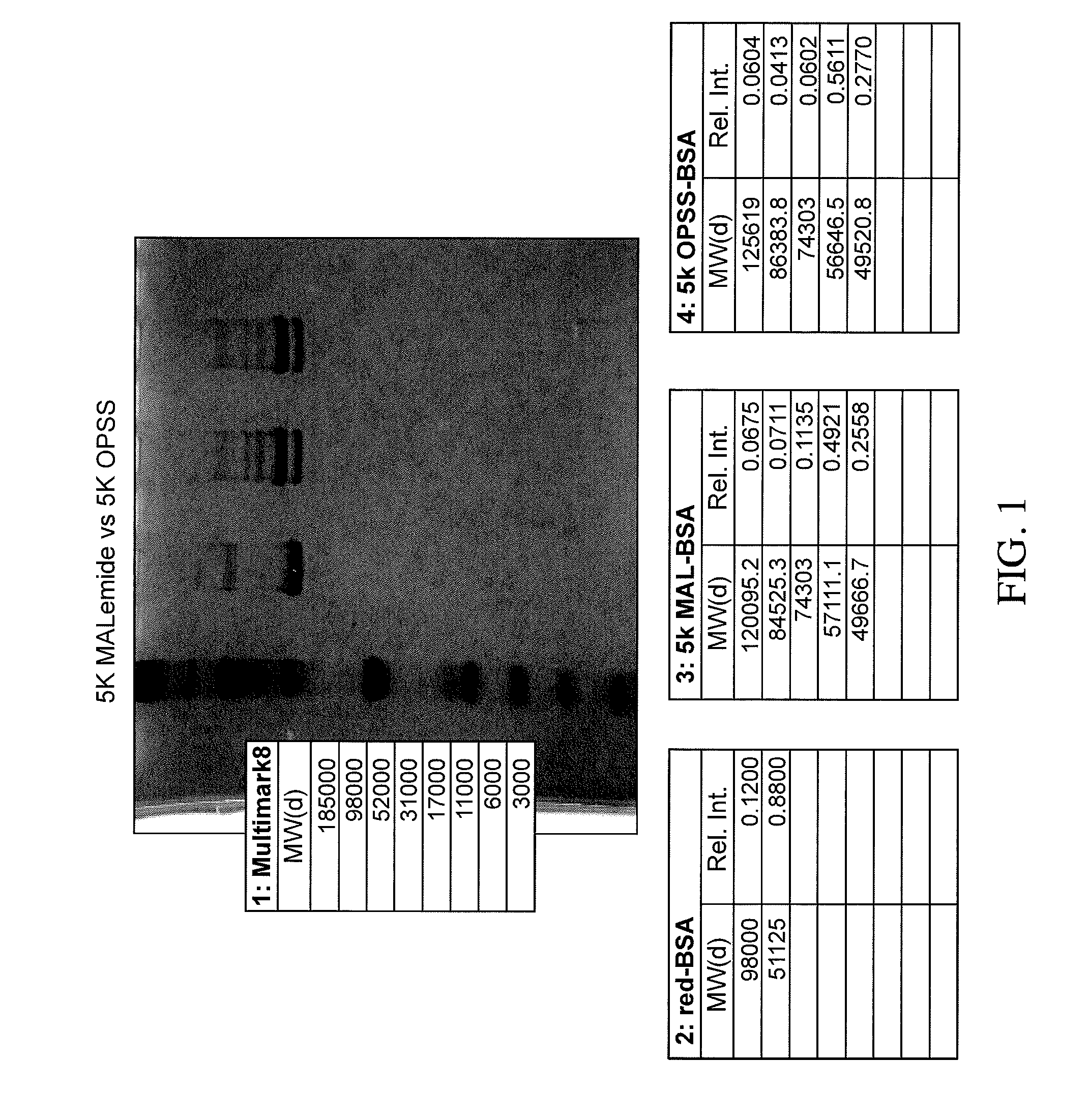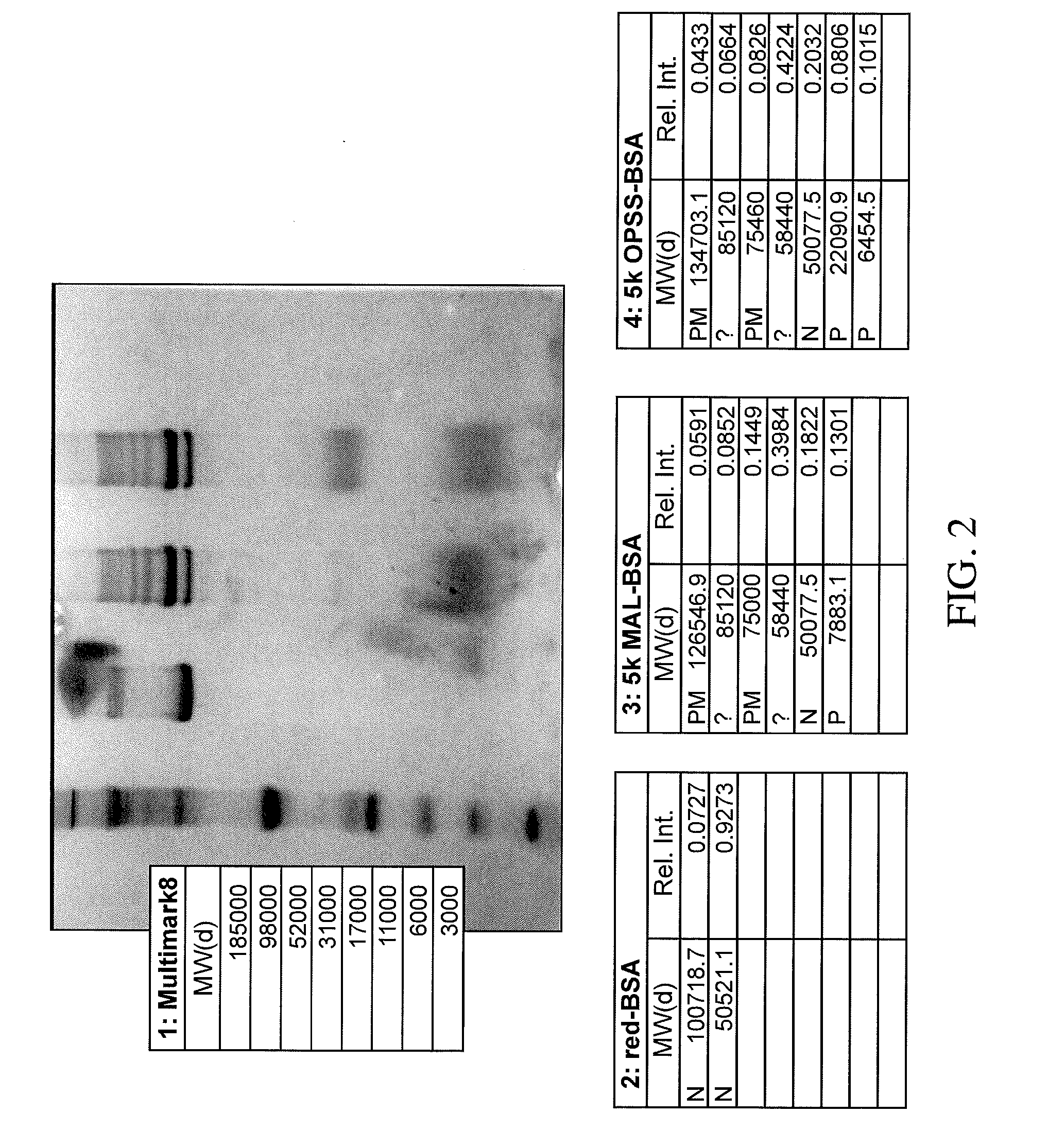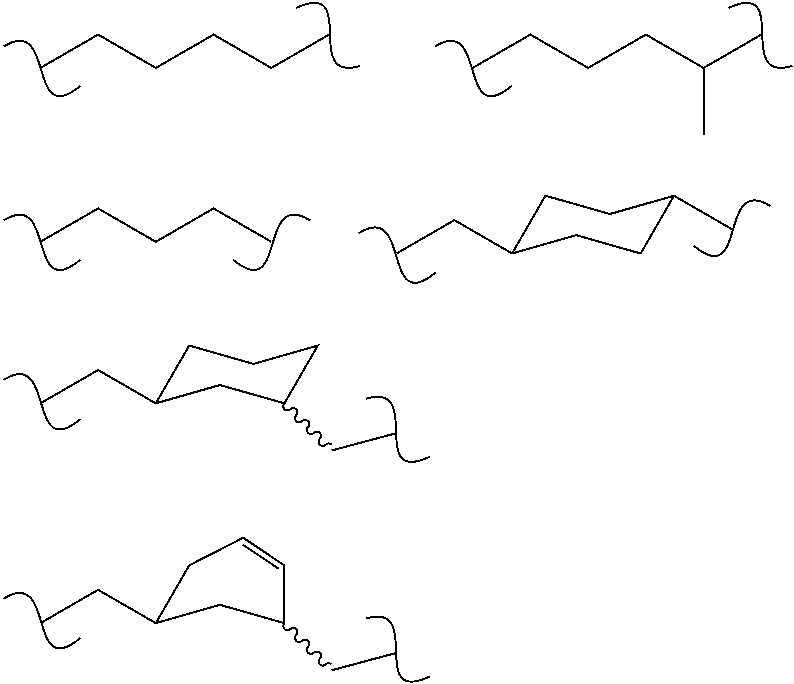Stabilized Polymeric Thiol Reagents
a technology of thiol and thiol, which is applied in the field of stabilized polymeric thiol reagents, can solve the problems of reducing the usefulness of potential therapeutic biomolecules in unmodified form, reducing the ability of thiols to be highly susceptible to oxidative coupling, and reducing the tendency to dimerize reagents. , the effect of reducing the tendency to dimerization
- Summary
- Abstract
- Description
- Claims
- Application Information
AI Technical Summary
Benefits of technology
Problems solved by technology
Method used
Image
Examples
example 1
Preparation of mPEG-(CH2)4-orthopyridyl disulfide (mPEG-4C-OPSS)
[0228]I. mPEG5000-butyl bromide
[0229]A solution of mPEG5000 (20.0 g, 0.004 mol) (NOF Corporation) in toluene (200 ml) was azeotropically dried by distilling off 50 ml toluene. Sodium hydride (0.8 g, 60% dispersion in mineral oil, 0.020 mol) was added, and the mixture was stirred for 1 h at 60° C. under an argon atmosphere. 1,4-Dibromobutane (9.0 g, 0.0417 mol) was added, and the mixture was stirred overnight at 75° C. under argon. The mixture was filtered and concentrated under reduced pressure, and the residue was combined with 850 ml cold ethyl ether. The precipitated product was filtered off and dried under reduced pressure. Yield 17.4 g. NMR (d6-DMSO): 1.60 ppm (m, —O—CH2—CH2—CH2—CH2—Br, 2H), 1.84 ppm (m, —O—CH2—CH2—CH2—Br, 2H), 3.24 ppm (s, —OCH3, 3H), 3.51 ppm (s, PEG backbone).
[0230]II. mPEG5000-butanethiol
[0231]To a solution of mPEG5000-butyl bromide (2.0 g, 0.0004 mol) in anhydrous ethyl alcohol (20 ml), thiour...
example 2
Preparation of PEG2000-di-((CH2)4-orthopyridyl disulfide) (PEG-di-(4C-OPSS), 2 KDa)
[0236]
[0237]PEG2000-di-butyl bromide
[0238]A solution of PEG2000 (20.0 g, 0.020 equiv.) (NOF Corporation) in toluene (150 ml) was azeotropically dried by distilling off 50 ml toluene. Sodium hydride (6.0 g, 60% dispersion in mineral oil, 0.150 mol) was added, and the mixture was stirred for 1 h at 60° C. under an argon atmosphere. 1,4-Dibromobutane (34.55 g, 1.600 mol) was added, and the mixture was stirred overnight at 75° C. under argon. The mixture was filtered and concentrated under reduced pressure, and the residue was combined with 850 ml cold ethyl ether. The precipitated product was filtered off and dried under reduced pressure. Yield 17.0 g. NMR (d6-DMSO): 1.60 ppm (m, —O—CH2—CH2—CH2—CH2—Br, 2H), 1.84 ppm (m, —O—CH2—CH2—CH2—CH2—Br, 2H), 3.51 ppm (s, PEG backbone); substitution 96.3%.
[0239]PEG2000-di(butanethiol)
[0240]To a solution of PEG2000-di(butyl bromide) (10.0 g, 0.0100 equiv.) in anhydro...
example 3
Preparation of mPEG10,000-(CH2)4-orthopyridyl disulfide (mPEG-4C-OPSS, 10 KDa)
[0245]mPEG10,000-butyl bromide
[0246]A solution of mPEG10,000 (20.0 g, 0.002 mol) (NOF Corporation) in toluene (200 ml) was azeotropically dried by distilling off 50 ml toluene. Sodium hydride (0.8 g, 60% dispersion in mineral oil, 0.0200 mol) was added, and the mixture was stirred for 1 h at 60° C. under an argon atmosphere. 1,4-Dibromobutane (4.8 g, 0.0222 mol) was added, and the mixture was stirred overnight at 75° C. under argon. The mixture was filtered and concentrated under reduced pressure, and the residue was combined with 850 ml cold ethyl ether. The precipitated product was filtered off and dried under reduced pressure. Yield 18.5 g. NMR (d6-DMSO): 1.60 ppm (m, —O—CH2—CH2—CH2—CH2—Br, 2H), 1.84 ppm (m, —O—CH2—CH2—CH2, —CH2—Br, 2H), 3.24 ppm (s, —OCH3, 3H), 3.51 ppm (s, PEG backbone); substitution 97.5%.
[0247]mPEG10,000-butanethiol
[0248]To a solution of mPEG10,000-butyl bromide (10.0 g, 0.0010 mol)...
PUM
 Login to View More
Login to View More Abstract
Description
Claims
Application Information
 Login to View More
Login to View More - R&D
- Intellectual Property
- Life Sciences
- Materials
- Tech Scout
- Unparalleled Data Quality
- Higher Quality Content
- 60% Fewer Hallucinations
Browse by: Latest US Patents, China's latest patents, Technical Efficacy Thesaurus, Application Domain, Technology Topic, Popular Technical Reports.
© 2025 PatSnap. All rights reserved.Legal|Privacy policy|Modern Slavery Act Transparency Statement|Sitemap|About US| Contact US: help@patsnap.com



